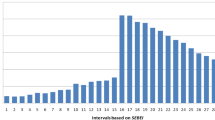Abstract
One of the more interesting characteristics about the real estate brokerage industry is that workers are presented with a choice regarding the sort of compensation scheme under which they want to work. An overwhelming majority of workers choose what is referred to as a commission split scheme in which the salesperson splits any commission that they earn with a supervising broker that they generally are required to work under. In this case the firm provides office support and administrative services to the salesperson and, in return, the salesperson must split any commissions that they earn with the firm. Under the alternative compensation scheme, workers pay a substantial up-front “desk” fee to the firm and then are allowed to keep 100% of any commissions that they earn. In spite of the large volume of research on the determinants of real estate salesperson earnings, to our knowledge there are no studies analyzing the choice of compensation scheme and its impact on the earnings of real estate salespersons. This study uses data from the 2001 and 2003 Membership Surveys of the National Association of REALTORs® to analyze the impact of the real estate salespersons’ choice of compensation scheme on their earnings.
Similar content being viewed by others
Notes
See Mincer (1970) for a survey of human capital theory.
Many of the variables used in the study were reported as intervals. In combining the surveys, these categories were standardized across the two surveys.
Note that both household and real estate income are reported over intervals. The ratio of real estate to household income is based on the information revealed by the relationship between these intervals. The maximum of the ratio is found by taking the upper bound of the real estate income range and dividing it into the lower bound of the household income range. The minimum of the ratio is found by taking the lower bound of the real estate income range and dividing it into the upper bound of the household income range. The final two points are found by dividing end points of the real estate income into the matching end points of the household income range (i.e., upper bound into upper boundary and lower bound into lower boundary). The ratio used in the analysis is the average of the four points described above.
The basis of this model was provided by Lee et al. (1979) which introduced a general procedure for imposing cross equation restrictions in a switching regression model with an endogenous switching framework, building on the work of Goldfeld and Quandt (1972, 1973). Heckman (1976a, 1976b) also considers a similar model of structural change with endogenous switching.
See Benjamin et al. (2000) for a list of these results.
References
Abelson, M., Kacmar, K., & Jackofsky, E. (1990). Factors influencing real estate brokerage sales staff performance. Journal of Real Estate Research, 5(2), 265–276.
Benjamin, J., Jud, G. D., & Sirmans, G. S. (2000). What do we know about real estate brokerage? Journal of Real Estate Research, 20(1–2), 5–30.
Carroll, T. M., & Clauretie, T. M. (2000). A note on the earnings of real estate salespersons and others in the financial services industry. Journal of Real Estate Finance and Economics, 21(3), 315–323. doi:10.1023/A:1012060021241.
Colwell, P. F., & Marshall, D. W. (1986). Market share in the real estate brokerage industry. AREUEA Journal, 14(4), 583–599.
Crellin, G. E., Frew, J. R., & Jud, G. D. (1988). The earnings of REALTORS® some empirical evidence. Journal of Real Estate Research, 3(2), 69–78.
Follain, J. R., Lutes, T., & Meier, D. A. (1987). Why do some real estate salespeople earn more than others? Journal of Real Estate Research, 2(1), 73–81.
Frew, J. R., & Jud, G. D. (1986). The value of a real estate franchise. AREUEA Journal, 14(2), 374–383.
Glower, M., & Hendershott, P. J. (1988). The determinants of REALTOR® income. Journal of Real Estate Research, 3(2), 53–68.
Goldfeld, S. M., & Quandt, R. E. (1972). Non-linear methods in econometrics. Amsterdam: North Holland.
Goldfeld, S. M., & Quandt, R. E. (1973). The estimation of structural shifts by switching regressions. Annals of Economic and Social Measurement, 4(2), 475–485.
Heckman, J. J. (1976a). The common structure of statistical models of truncation, sample selection and limited dependent variables and a simple estimator for such models. Annals of Economic and Social Measurement, 5(4), 120–137.
Heckman, J. J. (1976b). Simultaneous equations models with continuous and discrete endogenous variables and structural shifts. In S. M. Goldfeld & R. E. Quandt (Eds.), Studies in non-linear estimation. Cambridge, MA: Ballinger.
Jud, G. D., & Winkler, D. T. (1998). The earnings of real estate salespersons and others in the financial services industry. Journal of Real Estate Finance and Economics, 17(3), 279–291. doi:10.1023/A:1007733125056.
Jud, G. D., Rogers, R. C., & Crellin, G. E. (1994). Franchising and real estate brokerage. Journal of Real Estate Finance and Economics, 8(1), 87–93. doi:10.1007/BF01098918.
Lee, L. F., Maddala, G. S., Trost, R. P. (1979). Testing for structural change by D-Methods in switching simultaneous equation models. Proceedings of the American Statistical Association (Business and Economics Section), pp. 461–64.
Maddala, G. S. (1983). Limited-dependent and qualitative variables in econometrics. Cambridge, Mass: Cambridge University Press.
Mincer, J. (1970). The distribution of labor incomes: a survey. Journal of Economic Literature, 8(1), 1–26.
Sirmans, G. S., & Swicegood, P. G. (1997). Determinants of real estate licensee income. Journal of Real Estate Research, 14(2), 137–154.
Sirmans, G. S., & Swicegood, P. G. (2000). Determining real estate licensee income. Journal of Real Estate Research, 20(1), 189–204.
Acknowledgements
This research was funded by the National Association of REALTORS® National Center for Real Estate Research. The conclusions and opinions are not necessarily those of NAR or NCER.
Author information
Authors and Affiliations
Corresponding author
Rights and permissions
About this article
Cite this article
Martin, R.W., Munneke, H.J. Real Estate Brokerage Earnings: The Role of Choice of Compensation Scheme. J Real Estate Finan Econ 41, 369–389 (2010). https://doi.org/10.1007/s11146-009-9174-2
Published:
Issue Date:
DOI: https://doi.org/10.1007/s11146-009-9174-2



